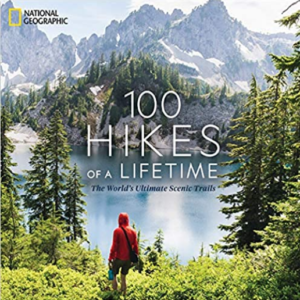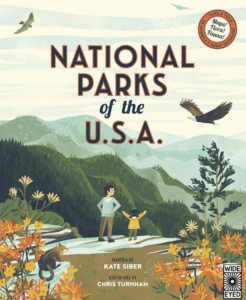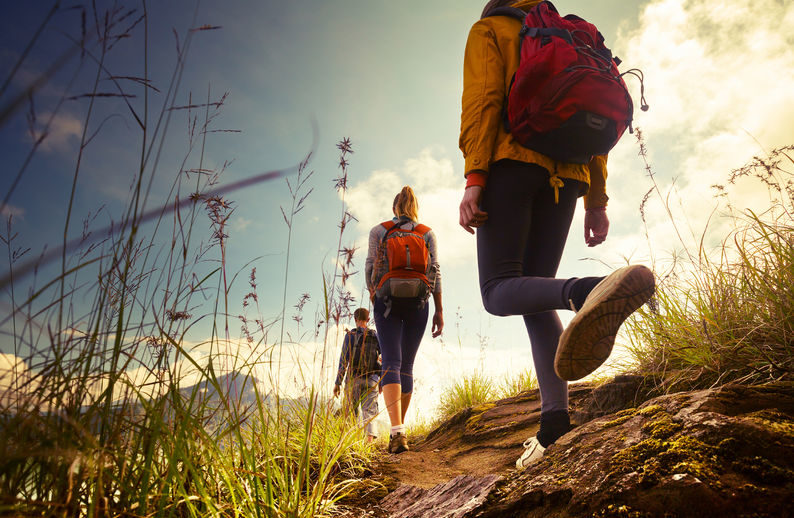There is no shortage of great places to hike and interact with nature in the US. But how do other terrains across the globe fair when it comes to this activity? And are there more benefits to taking a hike that meets the eye for not only adults but kids as well? Kate Siber, author of 100 Hikes of a Lifetime: The World’s Ultimate Scenic Trails and National Parks of the U.S.A., recently spoke with WellWell about the diverse beauty of the world’s nature walks and lesser-known values of getting outside and smelling the roses, pines or whatever else the Great Outdoors holds once in a while.
Hiking is obviously physical exercise but what are some lesser-known benefits of the activity?
Personally, it’s crucial to my mental well-being to be outside. But it’s not just my personal experience. There have been plenty of studies about the stress-releasing response our bodies have to nature. I think overall, it’s important to slow down every once in a while and connect with something not manmade, something that’s broader than yourself. It can be quite restorative.
As a creative person, do you think hiking can impact creative energy?
Absolutely. I’d be interested to see if there have ever been any studies on the topic, but personally, the energy from maneuvering outdoors in our natural habitat as human beings generates different perspectives and influences.
Your book, 100 Hikes of a Lifetime, is very wide-ranging, featuring hikes from across the globe. What is a country or region that people may be surprised has great scenic hiking?
The Six Waterfalls Hike in Micronesia comes to mind immediately. It’s on the island of Pohnpei. I think people don’t often associate tropical islands with hiking, it’s usually more beaches, snorkeling or sailing, but that’s a remarkable hike. It pretty much goes directly through a river and includes beautiful waterfalls. People tend to associate hiking with mountains, but Six Waterfalls is actually a deep jungle hike and its magnificent.
Any advice you would give to someone who might be new to this type of activity, important gear that people often neglect?
I think more than anything it’s important to not create too many barriers for yourself. You don’t need to have super special gear or elite skills to get the benefits and have fun. That being said, a good pair of durable and comfortable shoes will certainly help. First aid and enough food and water is also crucial, especially if you’re with kids.
Your other book, National Parks of the U.S.A., is a children’s guide to national parks. What can kids specifically gain from outdoor activities?
It’s crucial for kids for the same reasons that it’s crucial for adults – to connect with nature. I think adults become more accustomed to not connecting with nature, but children gravitate toward it. They love to explore.
Given this generation and the prevalence of technology that surrounds and encompasses daily life, is it more crucial than ever that children be introduced to the benefits and fun of outdoor activities?
I think so. It worries me the way that we as a society have become so glued to our devices and it obviously discourages outdoor activities for younger ones. But I think the earlier you introduce the concept of nature and its benefits, the better. If children are shown the wonders of nature before devices completely take over their lives, they’ll not only be more equipped to balance the digital world with the outside world, but they’ll want to.
100 Hikes of a Lifetime, reads almost as a bucket list of hikes. Personally, are there any bucket list hikes you haven’t hit yet?
An area I’ve always wanted to hike and haven’t yet been able is New Zealand. There are a number of great hikes there I’d be stoked to try. But I’ll tell you about one that was a bucket list item for me, Torres Del Paine. It’s in Chile near Patagonia and it is just remarkable. The mountains are incredible. The towers genuinely defy belief, they have to be seen to be believed. Absolutely a classic for me.
 About Kate Siber
About Kate Siber
Kate Siber is a freelance journalist and a correspondent for Outside magazine based in Durango, Colorado. Her writing has been featured in National Geographic Traveler, National Parks, Preservation, Men’s Journal and The New York Times, among other publications.
Learn more at www.katesiber.com












